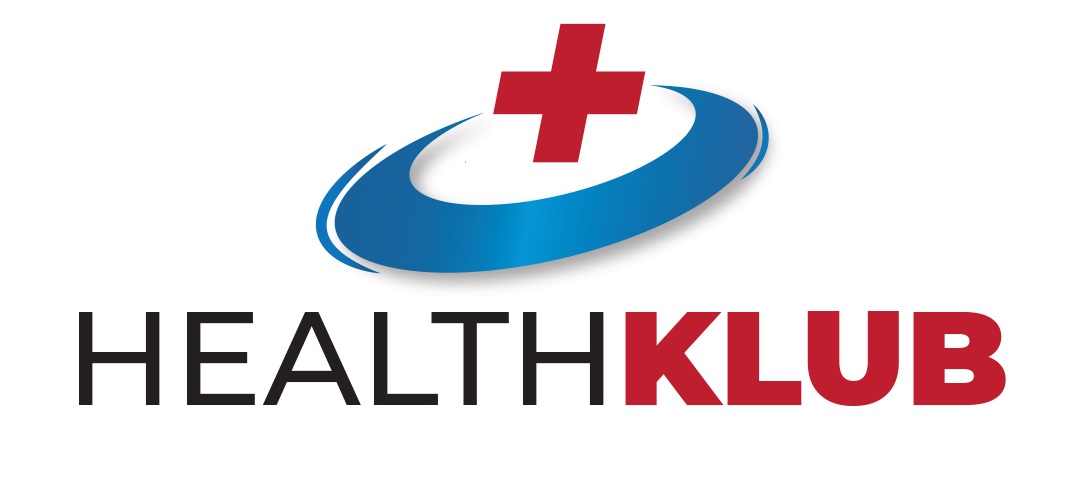Introduction
Migraines are far more than just a throbbing headache. They are complex, debilitating neurological events that affect millions of individuals worldwide. If you’ve ever experienced the relentless pain, nausea, and sensitivity to light and sound that accompany migraines, you understand the immense toll they can take on your quality of life. In our blog post, “What You Need To Know About Migraines,” we will delve into the intricacies of this condition, exploring its causes, symptoms, triggers, treatment options, and valuable insights on how to effectively manage the often overwhelming world of migraines. Whether you’re a migraine sufferer seeking guidance or simply curious about this neurological phenomenon, this post will provide you with a comprehensive understanding of migraines and their impact on those who endure them.
What Are Migraines?
Migraines are a complex and often distressing neurological condition that goes beyond a typical headache. They are characterized by recurrent, severe headaches that come with a range of accompanying symptoms. These symptoms can include nausea, vomiting, and heightened sensitivity to both light and sound. One distinctive feature of migraines is that they typically affect only one side of the head, though they can shift from one side to the other during an episode. The duration of a migraine can vary widely, lasting anywhere from a few hours to several days. Due to the intensity of the pain and the disruptive nature of the symptoms, migraines can severely impact an individual’s ability to perform daily tasks and can significantly reduce their overall quality of life. Understanding the nuances of migraines is crucial for effective management and relief from this neurological disorder.

Common Symptoms
Throbbing Headache:
The hallmark of a migraine is the throbbing headache, a symptom that sets it apart from ordinary headaches. This intense and pulsating pain is often felt on one side of the head, and it’s a defining feature of migraines. Migraine sufferers are all too familiar with this recurrent agony, which can be debilitating and significantly disrupt daily life. Understanding and addressing this characteristic symptom is a crucial step in managing and finding relief from the challenges of migraine attacks.
Auras:
Auras are a fascinating yet sometimes unsettling phenomenon experienced by some migraine sufferers. These sensory disturbances can serve as preludes to the actual headache, offering crucial insights into the impending migraine attack. While auras can manifest in various ways, visual auras are the most prevalent and easily recognizable, involving the perception of flashing lights, zigzag lines, blind spots, or shimmering waves. These visual disruptions typically persist for approximately 20 minutes to an hour and are regarded as valuable warning signs, signaling the imminent arrival of a migraine.
Nausea and Vomiting:
Nausea and vomiting are unwelcome companions to many migraine sufferers, often making their presence felt most intensely during the peak of a migraine attack. These symptoms, though variable in severity from person to person, are characteristic hallmarks of numerous migraine episodes. Unfortunately, they only serve to exacerbate the overall discomfort and distress associated with migraines, adding a layer of physical distress to the throbbing headache and other sensory disturbances.
Sensitivity to Light and Sound:
Migraine sufferers often become acutely sensitive to sensory stimuli during an attack. This heightened sensitivity to light (photophobia) and sound (phonophobia) can make it challenging to tolerate even normal levels of brightness and noise. Brightly lit rooms or loud sounds can exacerbate migraine symptoms.
Aura:
As mentioned earlier, an aura is a temporary sensory or visual disturbance that can precede or coincide with a migraine. Although visual disturbances are most common, auras can also manifest as tingling sensations in the limbs, difficulty speaking, or unusual smells.
Fatigue:
After a migraine episode subsides, individuals often experience a profound sense of fatigue and exhaustion. The combination of severe pain, nausea, and sensory sensitivity during a migraine can leave them physically and mentally drained, sometimes requiring rest and recovery.
Understanding these common symptoms is vital for both migraine sufferers and those around them. Recognizing the signs and symptoms of a migraine can lead to more effective management and support for individuals experiencing this often debilitating condition.
Triggers
Identifying migraine triggers is crucial for managing the condition effectively. Common triggers include:

Stress:
Emotional stress is a prominent trigger for migraines. Stress activates the body’s “fight or flight” response, leading to changes in blood flow and the release of certain chemicals in the brain that can trigger a migraine attack. For many migraine sufferers, stress management techniques like relaxation exercises, meditation, and counseling can be helpful in reducing the frequency and severity of migraines.
Diet:
Diet plays a significant role in triggering migraines for some individuals. Certain foods and beverages are known to be common culprits, including:
- Aged Cheeses: Cheeses like cheddar, gouda, and parmesan contain tyramine, a substance that can trigger migraines in some people.
- Caffeine: While caffeine can help alleviate some headaches, it can also trigger migraines in others, especially if consumed in excess or if there is a sudden caffeine withdrawal.
- Alcohol: Alcohol, particularly red wine, beer, and spirits, can be a migraine trigger for many. The specific type and quantity of alcohol that trigger migraines can vary among individuals.
- Artificial Sweeteners: Some artificial sweeteners like aspartame have been linked to migraines in susceptible individuals.
Hormonal Changes:
Hormonal fluctuations, especially in women, are a common migraine trigger. These changes can occur during menstruation, pregnancy, menopause, or when using hormonal contraceptives. The exact mechanisms behind these hormonal triggers are complex but are thought to be related to fluctuations in estrogen levels.
Weather Changes:
Rapid changes in weather conditions, such as sudden temperature drops, high humidity, and shifts in barometric pressure, can trigger migraines in some individuals. While the exact reasons for this are not fully understood, it is believed that these weather changes can affect blood vessels and trigger migraine attacks.
Sleep Patterns:
Irregular sleep patterns, including both insufficient sleep and excessive sleep, can provoke migraines. Poor sleep quality and changes in sleep routines can disrupt the body’s natural circadian rhythm, making it more susceptible to migraines. Establishing a consistent sleep schedule and practicing good sleep hygiene can help reduce this trigger.
Identifying personal migraine triggers is crucial for effective management. Keeping a migraine diary to track when and where migraines occur, along with potential triggers, can help individuals pinpoint their specific triggers and take proactive steps to avoid or manage them. Managing triggers can be an integral part of migraine prevention strategies, along with medication and lifestyle adjustments.
Treatment Options
Lifestyle Modifications:
Lifestyle changes play a crucial role in managing migraines. Identifying and avoiding triggers is an essential step. Common lifestyle modifications include:
- Regular Sleep Schedule: Maintaining a consistent sleep pattern by going to bed and waking up at the same times each day can help reduce the frequency of migraines triggered by irregular sleep.
- Stress Management: Stress is a significant trigger for migraines. Techniques such as relaxation exercises, meditation, and deep breathing can help manage stress and reduce the likelihood of migraine attacks.
- Balanced Diet: Adopting a well-balanced diet and staying hydrated can minimize migraines triggered by dietary factors. Avoiding known trigger foods is also advisable.
- Regular Exercise: Engaging in regular physical activity can help improve overall health and reduce the frequency and intensity of migraines for some individuals.
Medications:
Medications are often used to relieve pain and manage migraines. These can include:
- Over-the-Counter Pain Relievers: Non-prescription medications like ibuprofen, aspirin, and naproxen sodium can provide relief for mild to moderate migraine pain.
- Prescription Medications (Triptans): Triptans are a class of prescription medications specifically designed to target migraines. They work by narrowing blood vessels and reducing inflammation in the brain. Sumatriptan is a common example of a triptan medication.
Preventive Medications:
For individuals with frequent and severe migraines, preventive medications may be prescribed by a healthcare provider. These medications are taken regularly, even when not experiencing a migraine, to reduce the frequency and severity of migraine episodes. Options include anticonvulsants, beta-blockers, calcium channel blockers, and certain antidepressants.

Alternative Therapies:
Some individuals find relief from migraines through alternative therapies. These can include:
- Acupuncture: Acupuncture involves the insertion of thin needles into specific points on the body. Some people report reduced migraine frequency and intensity after acupuncture treatments.
- Biofeedback: Biofeedback is a technique that helps individuals gain greater control over certain physiological processes, such as muscle tension and heart rate. It can be used as a complementary therapy to manage migraines.
- Relaxation Techniques: Techniques like progressive muscle relaxation and guided imagery can help reduce stress and tension, potentially decreasing the frequency and severity of migraines.
Botox:
In some cases, Botox injections may be recommended to prevent chronic migraines. Doctors inject Botox into specific areas of the head and neck to help reduce the frequency and intensity of migraine attacks. This treatment is typically reserved for individuals who have not responded well to other preventive medications.
It’s essential for individuals with migraines to work closely with healthcare professionals to determine the most appropriate treatment plan. Treatment strategies may vary depending on the individual’s specific migraine triggers, frequency, and overall health. The goal is to manage and minimize migraine attacks while enhancing overall well-being and quality of life.
Coping Strategies
Living with migraines can be challenging, but there are strategies to help manage the condition:
Keep a Migraine Diary:
Maintaining a migraine diary is a valuable tool for individuals with migraines. In this diary, individuals record details about each migraine episode, including when it occurred, the duration, the severity of pain, any accompanying symptoms, and potential triggers such as dietary factors, stressors, or sleep patterns. Keeping a migraine diary helps identify patterns and triggers, enabling individuals to make informed lifestyle changes and work with healthcare providers to develop effective treatment plans.
Seek Support:
Living with migraines can be emotionally challenging. It’s essential to reach out for support when needed. Start by talking to a healthcare professional about your migraines. They can provide guidance, prescribe appropriate medications, and offer advice on managing your condition. Additionally, consider joining support groups or seeking therapy to address the emotional toll of migraines. Sharing experiences with others who understand can be comforting and empowering.
Create a Calm Environment:
During a migraine attack, it’s crucial to find a calm and comfortable environment that minimizes sensory stimulation. Bright lights, loud noises, and strong odors can exacerbate migraine symptoms. Resting in a dark, quiet room with minimal external stimuli can help alleviate discomfort and reduce the duration of a migraine episode.
Stay Hydrated:
Dehydration can trigger or worsen migraines. It’s essential to stay well-hydrated by drinking an adequate amount of water throughout the day. Avoid excessive caffeine or alcohol intake, both of which can contribute to dehydration. Maintaining proper hydration can help prevent migraines in some cases.
Stay Informed:
Knowledge is a powerful tool in managing migraines. Stay informed about the latest research and treatment options available for migraines. Understanding the underlying causes, potential triggers, and the latest advancements in migraine therapy allows individuals to work collaboratively with their healthcare providers to develop effective and personalized migraine management strategies.
Coping with migraines often involves a combination of lifestyle adjustments, medical treatments, and emotional support. Each person’s experience with migraines is unique, and what works best may vary from one individual to another. By implementing these coping strategies and working closely with healthcare professionals, individuals can better manage their migraines and improve their overall quality of life.
Conclusion
In conclusion, migraines are far more than just a severe headache; they are a multifaceted neurological condition that has a significant impact on the lives of millions worldwide. By gaining a comprehensive understanding of migraines, including their symptoms, triggers, available treatments, and coping strategies, individuals can navigate this challenging condition more effectively. If you or someone you know experiences migraines, it’s crucial to seek professional help and not hesitate to explore different approaches to managing this condition. Armed with the right knowledge and support, it is indeed possible to enhance the quality of life for those who grapple with the challenges of migraines.


